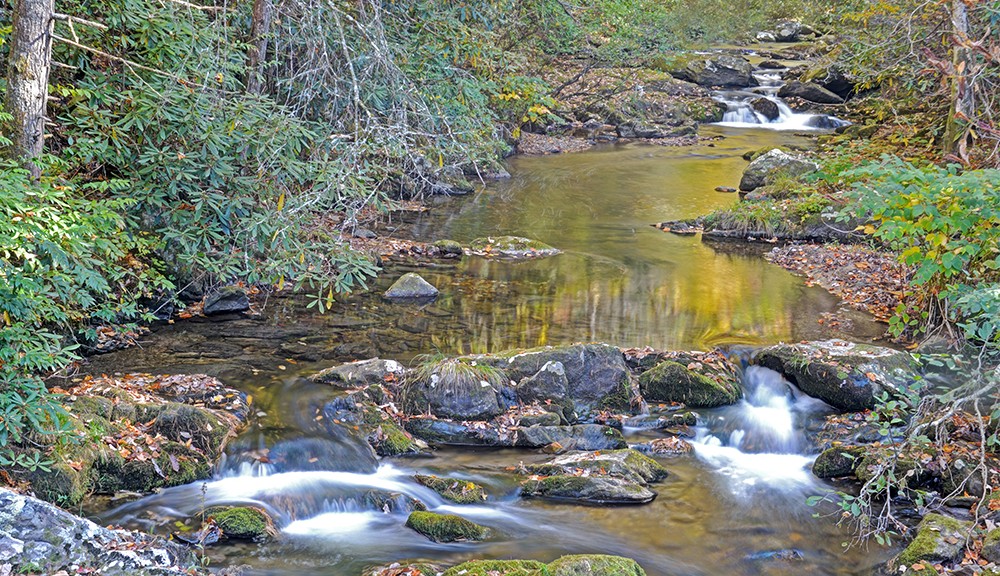
In March 2015, officials at the Great Smoky Mountains National Park announced that Lynn Camp Prong would be reopening, effective March 6, 2015. The opening of this stream marks a big milestone in the park’s history and future. It is the first time since the park’s establishment in 1934 that all the streams in the park will be open to fishing! The opening comes after a native brook trout restoration project that lasted seven years. The Lynn Camp Prong stream is an 8.5-mile section, so that means even more fishing opportunities for anglers in the Smoky Mountains. It’s an exciting time for those looking to fish in the Great Smoky Mountains National Park!
The seven-year project was focused on preserving the culture and heritage of the area, along with the future of the brook trout population. The Southern Appalachian brook trout is the only trout species that’s native to the Southern Appalachian Mountains. Less than 5% of all the areas brook trout previously occupied before any European settlements remain in the Southeast. In the 1900s, logging – a major part of the economy at the time – damaged local streams. Because of this damage, about 75% of the brook trout range was lost, leaving the fish less and less room to live.
“The opening of all streams in the park to recreational fishing marks an incredible milestone for the park and speaks to the commitment and dedication of our biologists and partners in restoring fish populations in the Smokies.” -Park Superintendent Cassius Cash
Within the 2,900 miles of streams in the Great Smoky Mountains National Park, about 20% are large enough to support trout populations. About 15.2% of the streams are home to rainbow trout, while brook trout are found in 8.6% and brown trout in 4.6%. The non-native rainbow trout and brown trout started being introduced to the park’s streams in the 20th century to allow for more fishing. Once the fish were introduced, they began growing in number, eventually displacing the native brook trout. Another contributing factor to the decreasing native trout has been acid rain over the past 30 years. Biologists have been working for years to restore the native trout population, and since 1986, they have put brook trout back into more than 27 miles of 11 streams. The restoration has been a big victory and a big project made possible by a lot of hands. Local volunteers, Federation of Fly Fishers, Trout Unlimited, and Friends of the Smokies are just a few of the people who have made a big impact in the restoration of the brook trout. Now that the project is complete, the Lynn Camp Prong stream is open for Smoky Mountain anglers to enjoy. It’s now part of the more than 800 miles of streams that are home to fish populations.
How does fishing affect this?
Over many years, biologists have studied the effects of fishing on the population of brook trout in the park. They have found that there are no effects on the brook trout population levels with fishing under the current park rules and regulations. So with more miles of stream open and the knowledge that it is safe to fish, anglers headed to the Smoky Mountains can enjoy their time fishing in the park. Biologists and volunteers will continue to study and work to create and maintain a safe environment and clean water for the fish and visitors to the park.
Fishing in the Smokies
With so many streams in Gatlinburg, Pigeon Forge, and the Great Smoky Mountains National Park, there are tons of opportunities for fishermen. Smoky Mountain Trout Tournaments are held in spring and fall, and local companies offer guided fishing tours. Smokies Angling Adventures, The Smoky Mountain Angler, and 3 Rivers Angler are three companies offering local, guided tours with experience fishermen. They can offer the expertise you need for a wonderful and successful day of fishing in the Great Smoky Mountains!
